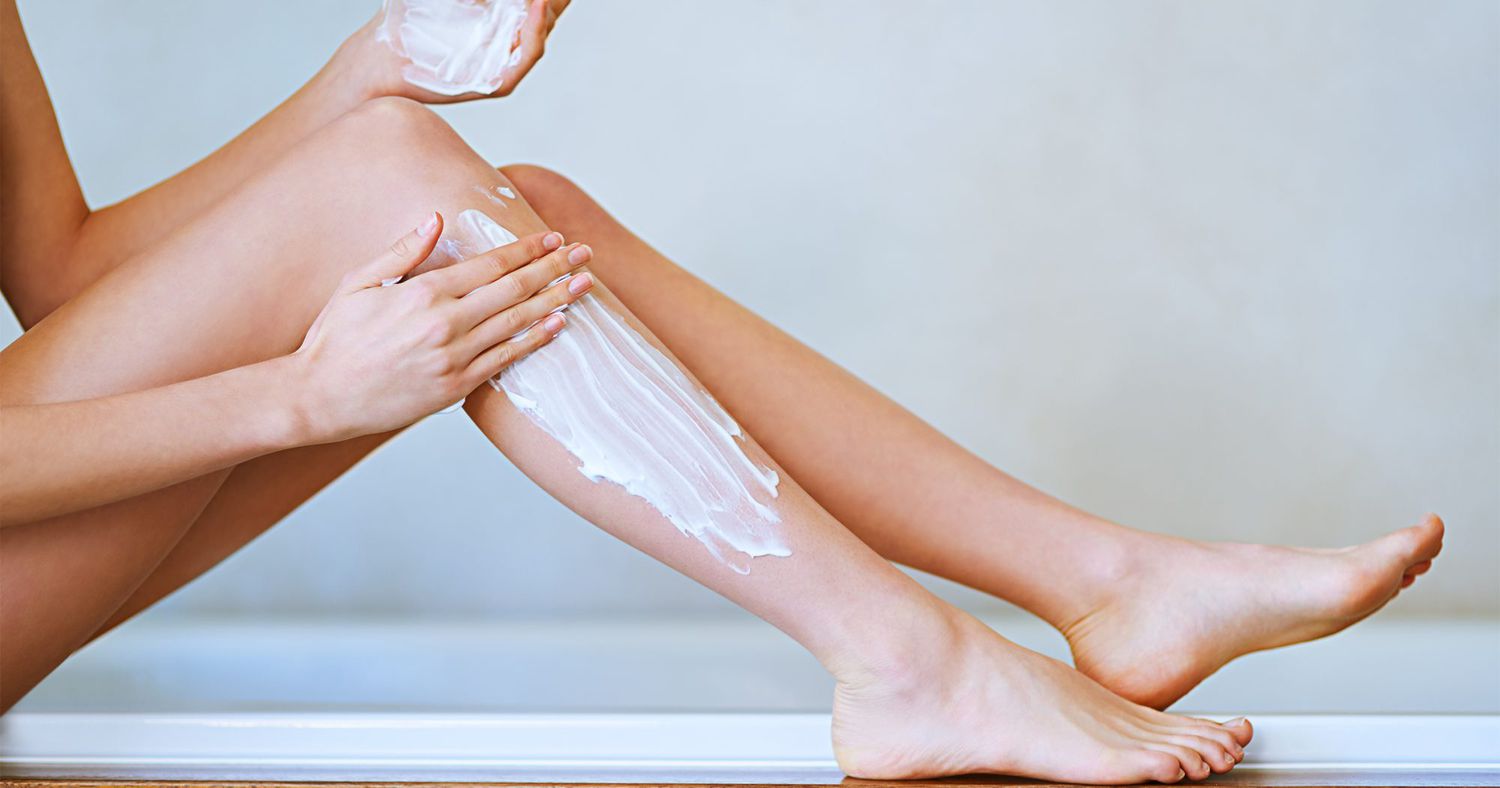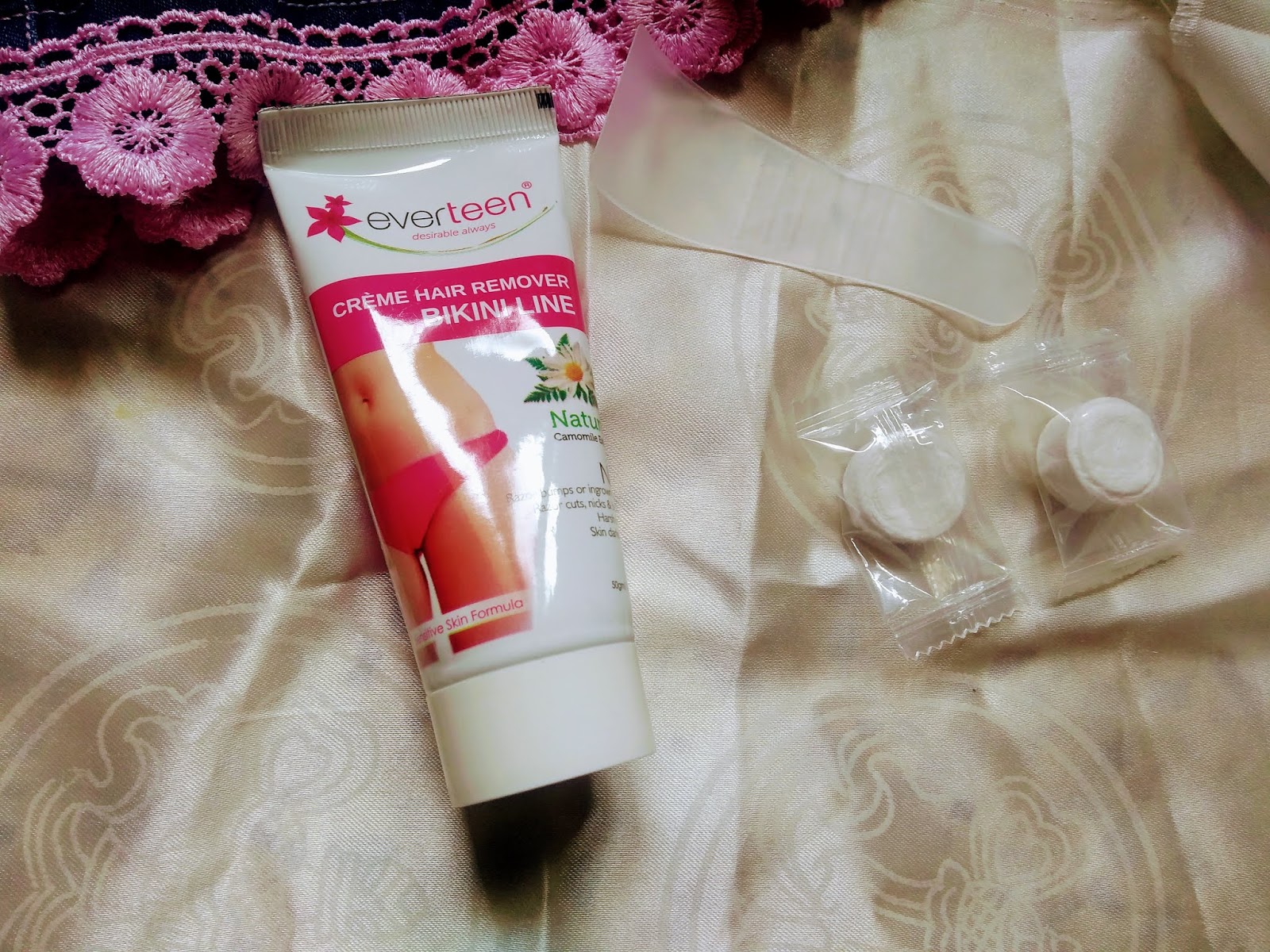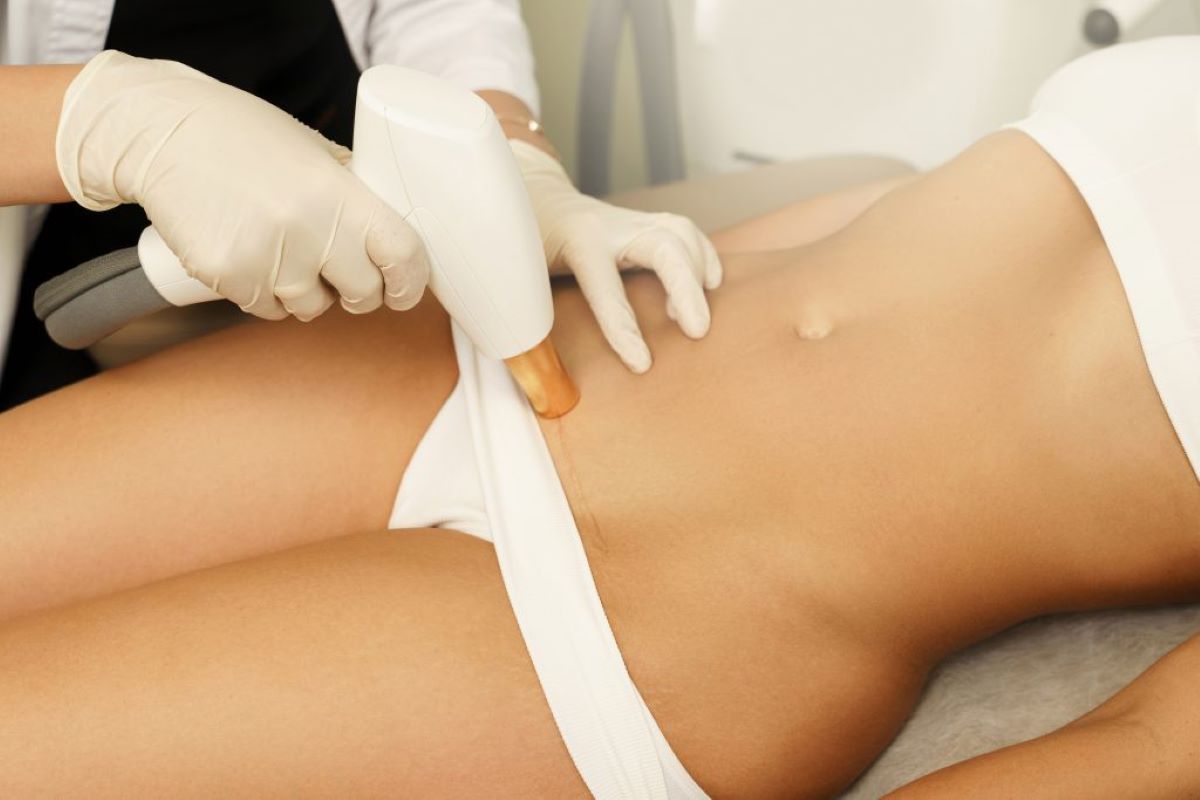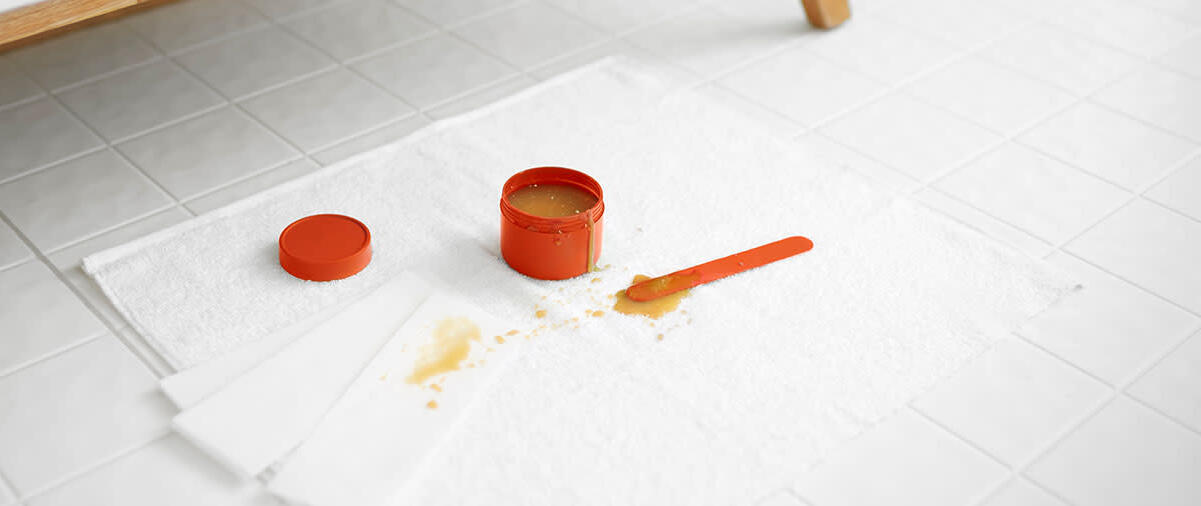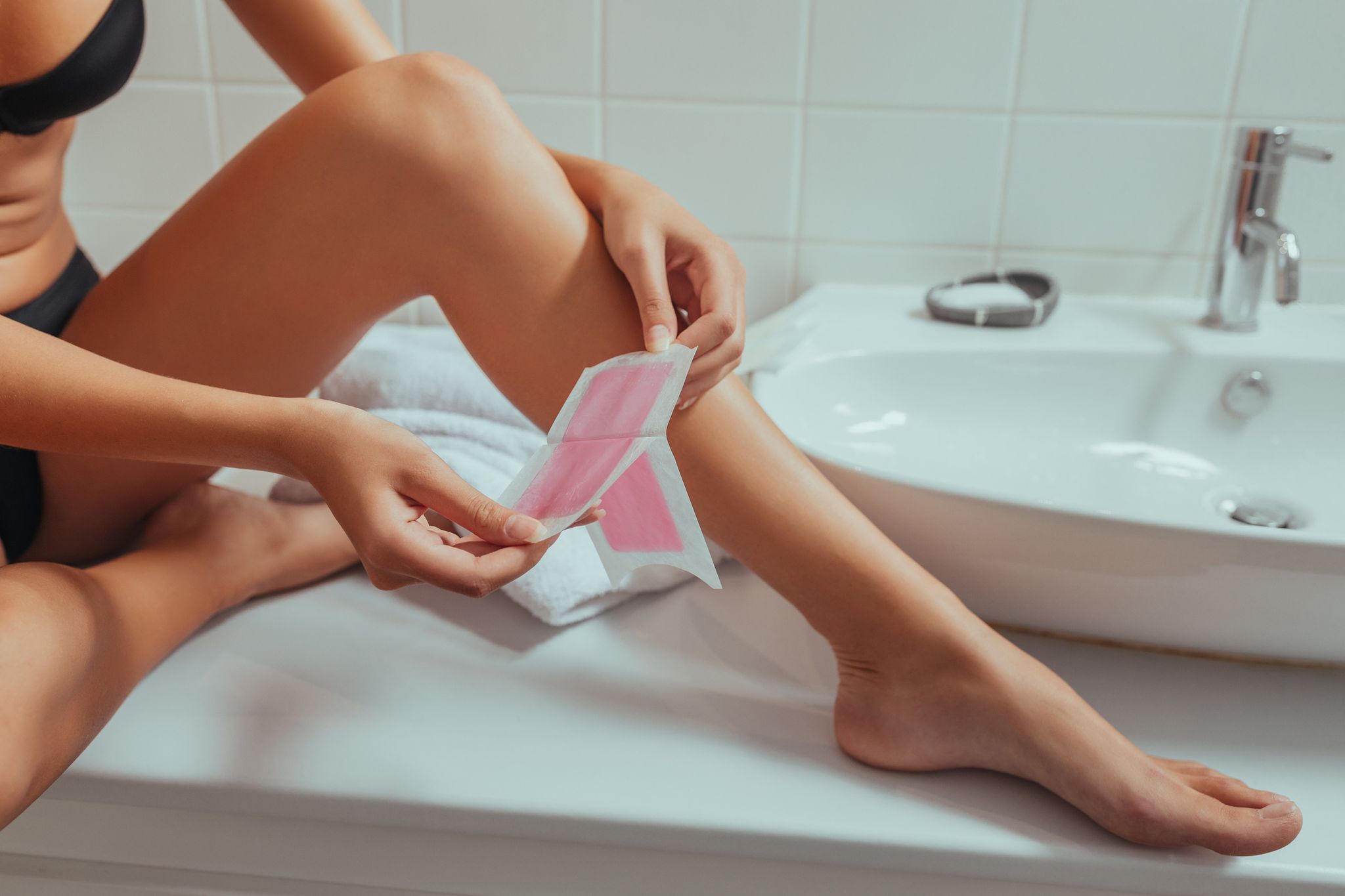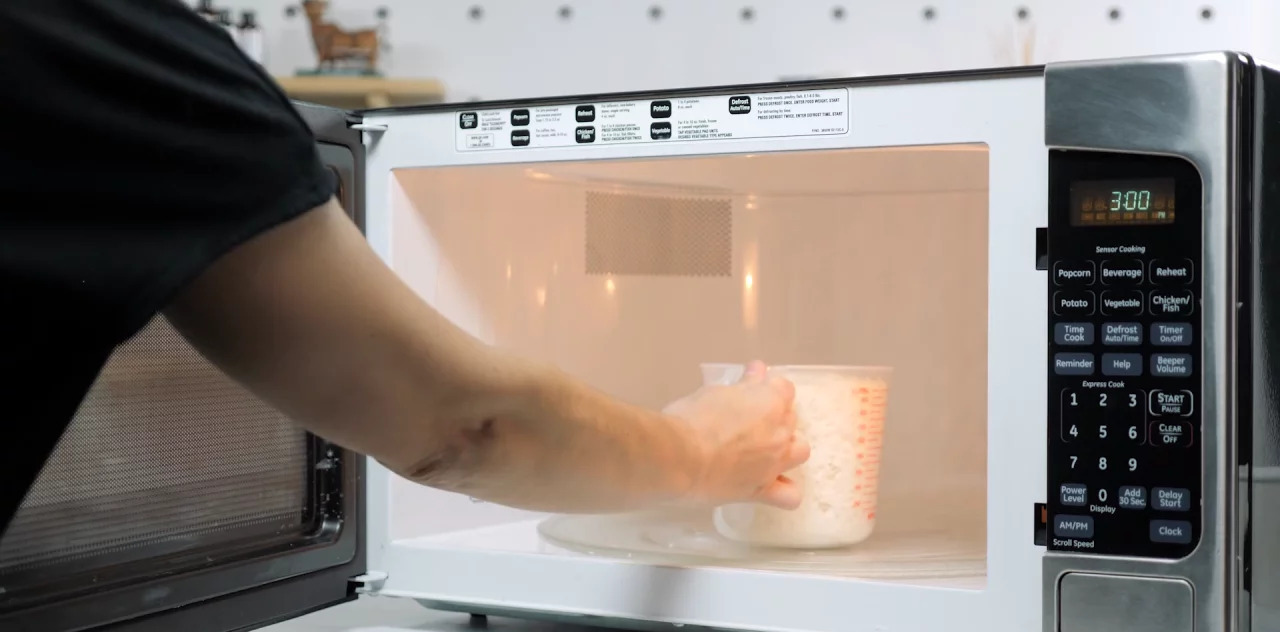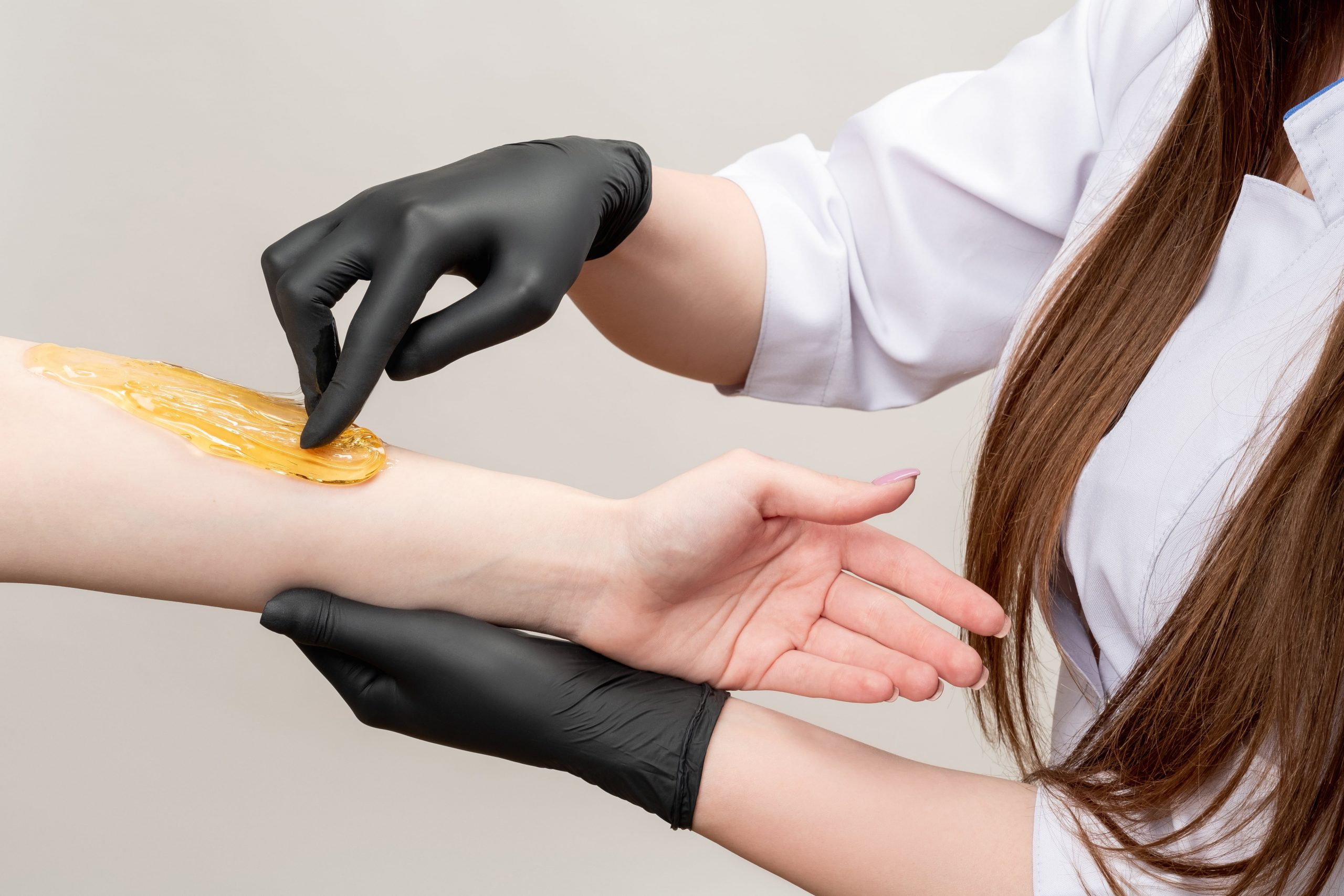Home>How-to Guides>For Women>How To Use Wax For Hair Removal
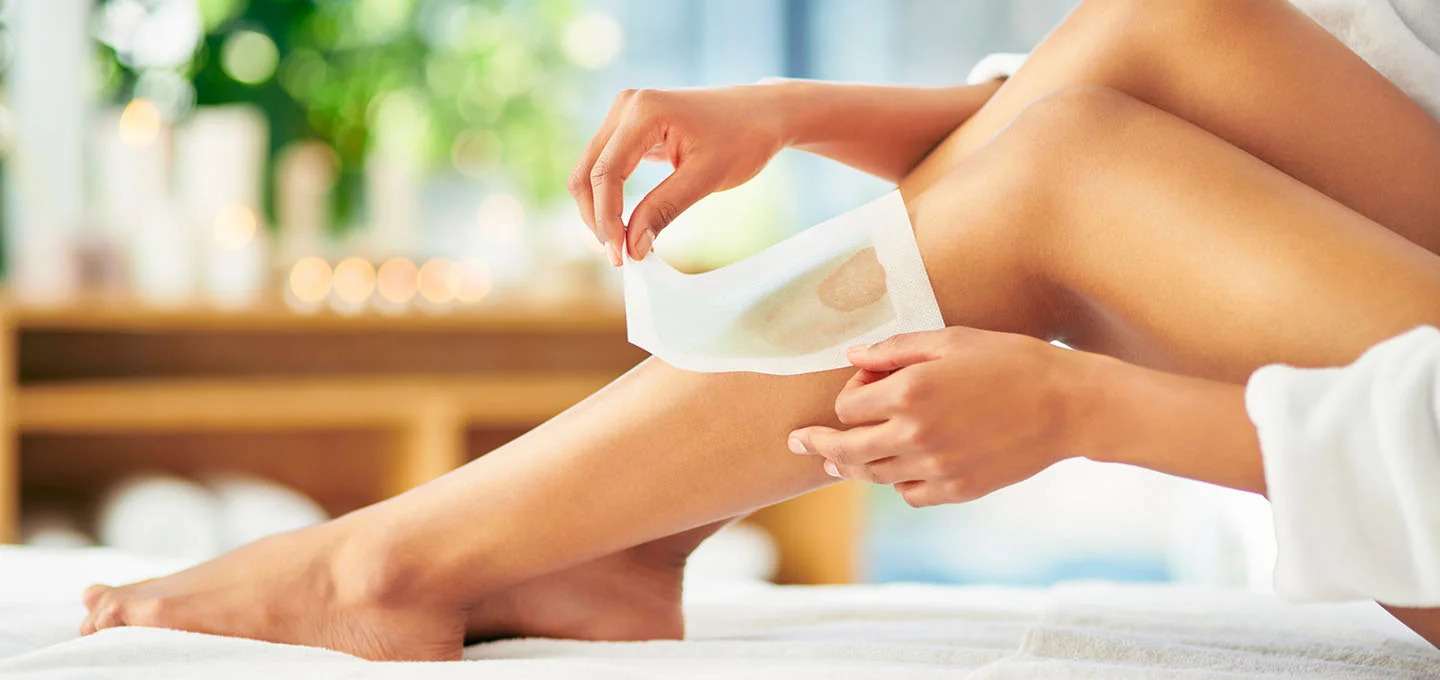

For Women
How To Use Wax For Hair Removal
Modified: August 5, 2023
Discover the perfect technique to use wax for hair removal. Our easy-to-follow guide is specifically designed for women seeking smooth and flawless skin.
(Many of the links in this article redirect to a specific reviewed product. Your purchase of these products through affiliate links helps to generate commission for Under-tec.com, at no extra cost. Learn more)
Table of Contents
Introduction
Waxing is a popular method of hair removal that has been used for centuries by women around the world. It is a versatile and long-lasting solution that not only removes hair but also leaves the skin smooth and exfoliated. Whether you’re a novice or an experienced waxer, understanding the proper technique and using the right products is key to achieving the best results.
In this article, we will guide you through the process of using wax for hair removal, covering everything from choosing the right waxing product to aftercare tips. By the end of this article, you will have the knowledge to confidently perform waxing at home or make informed decisions when visiting a professional waxing salon.
Before we dive into the specifics, it’s important to note that waxing can be a slightly uncomfortable process, especially for those with sensitive skin. However, with the right preparation and technique, the benefits will significantly outweigh the temporary discomfort.
So, if you’re ready to remove unwanted hair and reveal smooth, silky skin, let’s get started with understanding the art of waxing for hair removal.
Understanding Waxing for Hair Removal
Waxing is a method of hair removal that involves applying a sticky substance to the skin, allowing it to harden, and then pulling it off, taking the hair with it. This process effectively removes hair from the root, resulting in smoother and longer-lasting results compared to other hair removal methods, such as shaving or using depilatory creams.
There are two main types of wax used for hair removal: strip wax and hard wax. Strip wax is the most common type and is typically used for larger areas of the body, such as the legs and arms. It involves applying a thin layer of warm wax to the skin and then placing a strip of cloth or paper over it before quickly pulling it off in the opposite direction of hair growth.
Hard wax, on the other hand, is ideal for more sensitive areas, such as the bikini line, underarms, and face. Unlike strip wax, hard wax hardens and is removed directly without the need for a strip. It adheres to the hair and not the skin, making it a less painful option.
Before you start waxing, it’s essential to ensure that your hair is long enough for the wax to grip onto. Ideally, hair should be between 1/4 to 1/2 inch long, as shorter hair may not be effectively removed. If your hair is too long, consider trimming it down to the recommended length before waxing.
It’s also important to note that waxing is not suitable for everyone. Individuals with certain skin conditions, such as eczema or psoriasis, or those taking certain medications, may have adverse reactions to waxing. It’s always best to consult with a dermatologist or healthcare professional if you’re unsure whether waxing is safe for you.
Additionally, if you have recently used products that contain retinol or exfoliating acids on your skin, it’s recommended to wait at least a week before waxing. These products can make the skin more sensitive and prone to irritation.
Now that you have a basic understanding of waxing for hair removal, it’s time to delve into the process of choosing the right waxing product.+
Choosing the Right Waxing Product
When it comes to choosing the right waxing product for your hair removal needs, there are a few key factors to consider. These factors include the type of wax, the consistency, and the ingredients used. By understanding these factors, you can make an informed decision and achieve the best results.
First, consider the type of wax that suits your needs. As mentioned earlier, there are two main types: strip wax and hard wax. Strip wax is more versatile and can be used on larger areas of the body, while hard wax is gentler and suitable for sensitive areas. Assess the areas you plan to wax and choose the appropriate type accordingly.
Next, consider the consistency of the wax. Wax comes in various forms, including soft wax, which is typically used with strips, and firm wax, which is ideal for hard wax application. Soft wax is pliable and spreads easily on the skin, making it a popular choice for larger areas like legs and arms. Firm wax, on the other hand, is thicker and solidifies quickly, making it suitable for smaller, more delicate areas like the face and bikini line.
Another important aspect to consider is the ingredients used in the waxing product. Look for waxes that are formulated with natural ingredients like beeswax, which is known for its moisturizing and soothing properties. Avoid products that contain artificial fragrances, colors, or harsh chemicals that may irritate the skin.
If you’re unsure which waxing product to choose, consider seeking recommendations from friends, family, or beauty professionals who have experience with waxing. Additionally, reading online reviews and researching different brands can help you in making an informed decision.
Lastly, keep in mind your level of experience and comfort with waxing. If you’re a beginner, you may want to start with a waxing kit that includes everything you need, such as pre-waxed strips and post-waxing soothing products. These kits typically come with detailed instructions, making it easier for beginners to get started.
Now that you have a clear understanding of how to choose the right waxing product, let’s move on to the next important step: preparing your skin for waxing.
Preparing Your Skin for Waxing
Properly preparing your skin before waxing is crucial to achieving effective hair removal and minimizing potential discomfort or irritation. By following these steps, you can ensure that your skin is ready for the waxing process.
1. Exfoliate: Before waxing, it’s important to exfoliate your skin to remove any dead cells or impurities. This helps the wax adhere better to the hair and ensures a smoother hair removal process. Use a gentle scrub or exfoliating glove to gently massage your skin in circular motions, paying extra attention to areas that tend to be more prone to ingrown hairs, such as the bikini line or underarms.
2. Cleanse: Prior to waxing, thoroughly cleanse your skin to remove any dirt, oil, or residue. Use a mild cleanser that won’t strip your skin’s natural oils. Avoid applying any moisturizers, lotions, or oils to your skin on the day of waxing, as they can interfere with the wax’s ability to adhere properly to the hair.
3. Trim Hair if Necessary: If your hair is longer than the recommended length for waxing, trim it down using a pair of scissors or trimmer. Remember to leave approximately 1/4 to 1/2 inch of hair for the wax to grip onto. Avoid trimming the hair too short, as it may make it difficult for the wax to grab onto the hair effectively.
4. Check for Skin Sensitivity: Before applying wax to a larger area, perform a patch test on a small, inconspicuous area of your skin to check for any allergic reactions or sensitivity. Wait for 24 hours to ensure that your skin doesn’t exhibit any adverse reactions before proceeding with waxing the rest of the area.
5. Ensure Dry Skin: Make sure your skin is completely dry before applying the wax. Any moisture on the skin can prevent the wax from adhering properly and may result in less effective hair removal. Pat your skin dry with a clean towel and wait a few minutes to allow any residual moisture to evaporate.
By following these preparation steps, you will create an optimal canvas for waxing. Now that your skin is ready, we will move on to the next step: applying the wax.
Applying the Wax
Applying the wax correctly is essential for effective and comfortable hair removal. Follow these steps to ensure a smooth application process:
1. Heat the Wax: Start by heating the wax according to the instructions provided. Most waxes can be warmed in a microwave or by using a wax warmer. Make sure to heat the wax to the recommended temperature to avoid burns or skin damage.
2. Test the Temperature: Before applying the wax to a larger area, test it on a small patch of your skin. Gently touch the wax with your finger or a wooden applicator to ensure it’s at a comfortable temperature. If it’s too hot, let it cool down slightly before proceeding.
3. Apply a Thin Layer: Using a wooden or plastic spatula, apply a thin layer of wax in the direction of hair growth. Be sure to spread the wax evenly and smoothly to ensure proper adhesion. Avoid applying the wax too thickly, as this can make it harder to remove and cause more discomfort.
4. Leave an Edge: When applying the wax, leave a small strip or edge without any wax at the end. This will serve as a tab for easy gripping and removal later on.
5. Work in Small Sections: To ensure efficient hair removal, work in small sections at a time. Start with a manageable area and gradually move on to other areas. This will help you maintain control and minimize mess or wastage of wax.
6. Follow Hair Growth Direction: Always apply the wax in the direction of hair growth. This ensures the wax adheres properly to the hair and can effectively pull it from the root. Applying the wax against the hair growth can cause more discomfort and may not provide optimal results.
7. Let the Wax Harden: Allow the wax to cool and harden for a few seconds. This timeframe may vary depending on the type of wax you’re using, so be sure to refer to the instructions provided with your specific product.
By applying the wax correctly, you’ll set yourself up for a successful hair removal process. In the next section, we’ll discuss the crucial step of removing the hair with wax.
Removing the Hair with Wax
After applying the wax and allowing it to harden, it’s time to remove the hair. Follow these steps to ensure a smooth and effective hair removal process:
1. Check the Hardness: Before proceeding, check to make sure the wax has fully hardened. Gently touch the wax to ensure it is no longer sticky or tacky to the touch. If the wax is not yet hardened, give it a few more seconds to cool down and solidify.
2. Hold the Skin Taut: Using one hand, hold the skin taut near the edge of the waxed area. This helps reduce discomfort and allows for a better grip when removing the wax.
3. Pull Against the Hair Growth: Using a swift motion, pull the edge of the wax in the opposite direction of hair growth. Make sure to pull close to the skin and parallel to the surface. This will help in effectively removing the hair from the root.
4. Ensure Proper Technique: It’s important to pull the wax off in one quick motion rather than slowly peeling it off. This helps minimize pain and ensures the hair is removed efficiently. If necessary, take a deep breath and stay focused to execute a smooth and swift motion.
5. Repeat as Needed: After removing a section of wax, observe the results and assess if any additional areas need to be addressed. Repeat the process by applying wax to small sections at a time and removing the hair as directed.
6. Remove Residual Wax: If there is any leftover wax on the skin, use a clean cloth or a wax remover solution to gently wipe off the residue. It’s important to avoid using harsh or abrasive products that may irritate the skin.
7. Take Breaks if Necessary: If you experience any discomfort or sensitivity during the process, take breaks between waxing sections. This allows your skin to relax and recover before continuing.
Remember, the key to successful hair removal with waxing is to pull the wax off quickly and against the hair growth. With practice and patience, you’ll become more skilled in this technique.
After successfully removing the hair, it’s important to provide the necessary aftercare for your skin. In the next section, we’ll discuss essential tips for post-waxing care.
Aftercare for Waxing
After waxing, it’s crucial to provide proper aftercare to soothe the skin, minimize potential side effects, and maintain the results. Follow these essential tips for post-waxing care:
1. Calm and Soothe the Skin: After removing the hair with wax, the skin may be sensitive and potentially irritated. Apply a gentle, alcohol-free moisturizer or a soothing aloe vera gel to hydrate and calm the skin. Avoid scented or heavily fragranced products that may further irritate the skin.
2. Avoid Heat and Sun Exposure: For at least 24 hours post-waxing, avoid exposing the waxed areas to heat, such as hot showers, saunas, or steam rooms. Additionally, protect the waxed areas from direct sunlight and avoid tanning beds. Heat and sun exposure can increase skin sensitivity and potentially cause irritation.
3. Skip Harsh Chemicals: Refrain from using products with harsh chemicals, such as exfoliants, retinoids, or alpha hydroxy acids, on the waxed areas for at least 48 hours. These substances can further sensitise the skin and increase the risk of irritation or inflammation.
4. Steer Clear of Tight Clothing: Opt for loose-fitting clothing after waxing to prevent unnecessary friction and irritation. Tight clothing can rub against the waxed areas and potentially lead to ingrown hairs or bumps.
5. Resist Touching or Picking: Avoid touching or picking at the waxed areas to prevent irritation, infection, or ingrown hairs. Allow the skin to heal naturally and give the hair enough time to grow back before considering another waxing session.
6. Moisturize Daily: In the days following waxing, continue moisturizing the waxed areas daily to keep the skin hydrated and supple. Use a gentle, non-comedogenic moisturizer to prevent clogged pores or breakouts.
7. Schedule Regular Maintenance: To maintain smooth, hair-free skin, establish a regular waxing schedule. This will help in reducing hair regrowth over time and ensure longer-lasting results. Consult with a professional or refer to the product’s instructions for the recommended time frame between waxing sessions.
By following these aftercare tips, you can help your skin recover and maintain the results of your waxing session. In the next section, we’ll share some additional tips and tricks for successful waxing.
Tips and Tricks for Successful Waxing
Waxing can be a skill that improves with practice and experience. To help you achieve successful waxing sessions, here are some helpful tips and tricks to keep in mind:
1. Trim Hair to the Recommended Length: Make sure your hair is the appropriate length for waxing. Trim it down to about 1/4 to 1/2 inch long. This ensures that the wax can grip the hair effectively for optimal removal.
2. Take Pain Relievers if Needed: If you have a low pain tolerance, consider taking over-the-counter pain relievers, such as ibuprofen, about 30 minutes before your waxing session. This can help minimize any discomfort during the process.
3. Wax After Your Menstrual Cycle: If you’re planning to wax sensitive areas such as the bikini line, it’s best to schedule your waxing appointment a few days after your menstrual cycle. Your pain threshold may be lower during this time, so it’s best to avoid any added discomfort.
4. Use Powder or Cornstarch: Before applying the wax, dust the area with a bit of powder or cornstarch. This helps to absorb any excess moisture, allowing the wax to adhere better to the hair and reducing the risk of pulling on the skin.
5. Apply Pressure After Removing Wax: After removing the wax, apply gentle pressure with your hand or a clean cloth to the waxed area. This helps to soothe the skin and reduce any lingering discomfort.
6. Apply Ice or Cooling Gel: If you experience any redness, inflammation, or discomfort after waxing, apply a cold compress or cooling gel to the waxed area. This helps to calm and reduce any post-waxing irritation.
7. Exfoliate Between Sessions: Regularly exfoliate the waxed area between sessions to prevent the buildup of dead skin cells and reduce the risk of ingrown hairs. Use a gentle exfoliating scrub or a soft-bristle brush to slough off any dead skin.
8. Consider Professional Help: If you’re new to waxing or tackling a sensitive area for the first time, it might be beneficial to seek professional assistance. A trained esthetician can provide expert advice, ensure proper technique, and minimize the risk of complications.
9. Stay Consistent: Waxing is most effective when done on a regular schedule. Stick to a consistent waxing routine to maintain smooth and hair-free skin over time. As you continue waxing, you may notice that the hair thins out and regrowth becomes slower.
Remember, practice makes perfect when it comes to waxing. The more you wax, the more comfortable and efficient you’ll become. Implement these tips and tricks into your routine to ensure successful waxing experiences.
Next, let’s take a look at some common mistakes to avoid when waxing.
Common Mistakes to Avoid
Waxing can be a rewarding hair removal method when done correctly. However, certain mistakes can lead to ineffective results, discomfort, or skin irritation. Here are some common mistakes to avoid when waxing:
1. Pulling Wax in the Wrong Direction: When removing the wax, make sure to pull it in the opposite direction of hair growth. Pulling in the wrong direction can result in ineffective hair removal and increased discomfort.
2. Applying Wax on Unprepared or Moist Skin: Properly prepare your skin by cleansing and drying it before applying wax. Applying wax on damp or unprepared skin can hinder the wax’s effectiveness and lead to poor hair removal.
3. Applying Too Much Wax: Applying too thick a layer of wax can make it difficult to remove and cause more pain and discomfort. Apply a thin layer of wax to ensure optimal hair removal and minimize discomfort.
4. Using Wax That’s Too Hot: Always test the temperature of the wax before applying it to a larger area. Using wax that’s too hot can result in burns or skin damage. Ensure that the wax is heated to the recommended temperature range.
5. Reusing Wax Strips: Reusing wax strips can lead to ineffective hair removal and potential contamination. Always use a fresh strip for each application to ensure optimal results and maintain hygienic practices.
6. Not Holding the Skin Taut: Holding the skin taut while removing the wax helps reduce discomfort and ensures a smoother hair removal process. Failure to hold the skin properly can result in less effective hair removal and potential skin damage.
7. Over-Waxing or Waxing Too Frequently: Avoid waxing the same area multiple times in a single session, as it can cause unnecessary irritation and damage to the skin. Additionally, refrain from waxing too frequently, as this can lead to skin sensitivity and potential ingrown hairs.
8. Ignoring Aftercare: Proper aftercare is crucial to prevent skin irritations and maintain the results of waxing. Avoid skipping post-wax care, such as moisturizing or protecting the skin from sun exposure, as this can lead to adverse reactions.
9. Struggling with Ingrown Hairs: Ingrown hairs can occur after waxing. Avoid picking or scratching at ingrown hairs, as this can lead to infection or scarring. Instead, gently exfoliate the area and apply products specifically designed to prevent and treat ingrown hairs.
By steering clear of these common mistakes, you can enhance your waxing experience and achieve smooth, hair-free results with minimal discomfort or skin irritation.
Now that you’re aware of these mistakes, let’s wrap up with a summary of the key points discussed in this article.
Conclusion
Congratulations! You’ve now gained a comprehensive understanding of using wax for hair removal. From understanding the different types of wax to choosing the right product, preparing your skin, applying the wax correctly, and providing aftercare, you have all the knowledge needed for successful waxing.
Remember to always choose the appropriate wax for each area of the body, whether it’s strip wax for larger areas or hard wax for more delicate ones. Take the time to prepare your skin properly by exfoliating, cleansing, and ensuring the right hair length. When applying the wax, be mindful of the direction and thickness, and remove it swiftly against the hair growth for best results.
Afterward, provide the necessary aftercare by moisturizing, avoiding heat and sun exposure, and maintaining a consistent routine. And don’t forget to avoid common mistakes like pulling the wax in the wrong direction, reusing wax strips, or waxing too frequently.
With these tips and techniques, you’ll be well-equipped to achieve smooth, hair-free skin with waxing. While the process may require some practice and patience, the end results will be worth it. Enjoy the confidence and convenience that waxing brings as a long-lasting hair removal method.
Now it’s time to put this knowledge into practice and experience the benefits of waxing for yourself. Happy waxing!

